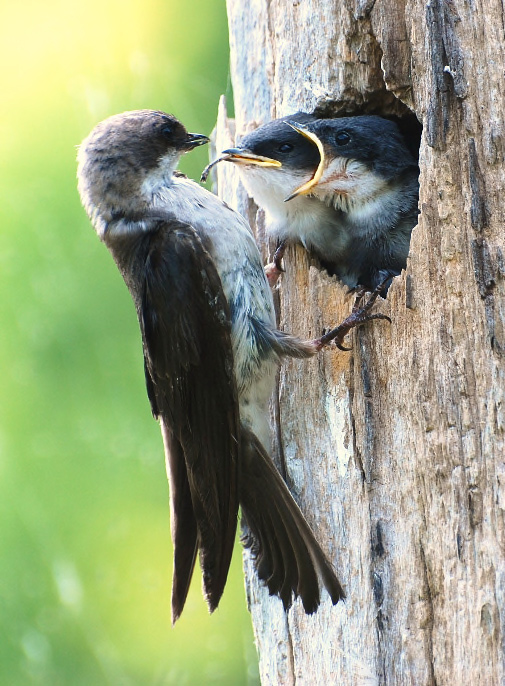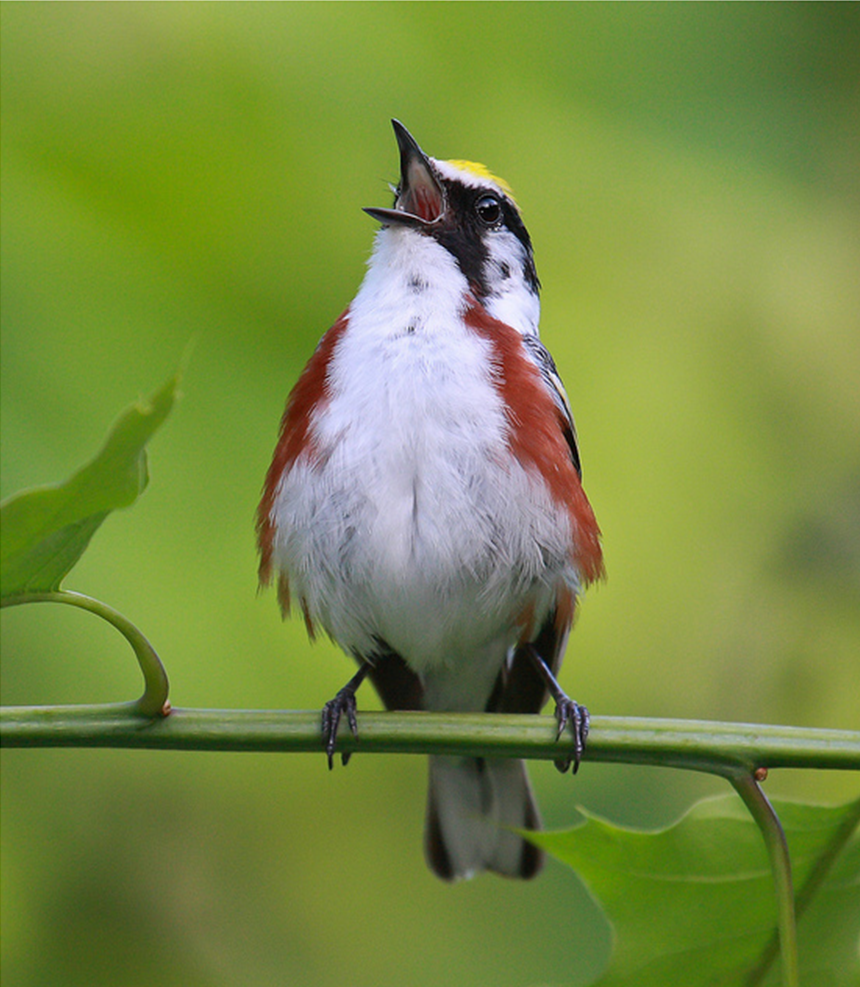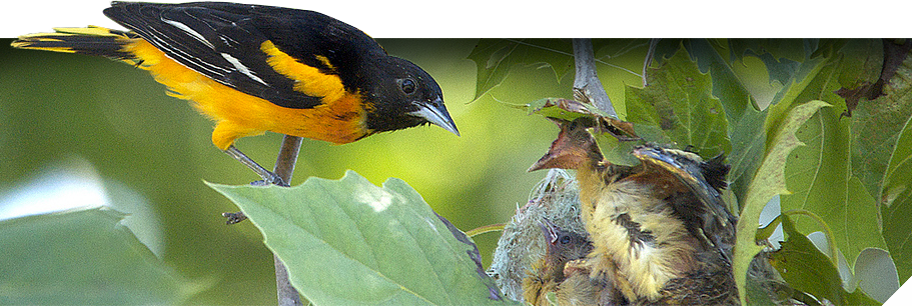Myths About Nesting Birds

Tree Swallow and Nestlings
MYTH: Birds that don’t migrate are not protected by law.
It is illegal to destroy, possess, or sell bird eggs, nests, parts, and feathers of ANY bird native to or migrating within North America, according to the Migratory Bird Treaty Act of 1918. Additional local and state regulations may also be applicable.
MYTH: If you return a baby bird to its nest, the parents will smell your scent and reject it.
Parent birds do not recognize their young by smell. If you find a baby bird on the ground, it’s okay to return it to its nest (which is almost certainly nearby). However, before you return a chick to its nest, you should be sure it did not leave on its own. If it’s sparsely feathered and not capable of hopping, walking, flitting, or gripping tightly to your finger, it’s a nestling. If you can find the nest (it may be well hidden), put the bird back as quickly as possible. If the bird is feathered and capable of hopping or flitting, and its toes can tightly grip your finger or a twig, it’s a fledgling. Fledglings are generally adorable, fluffy, and have a tiny stub of a tail. Their parents are nearby and watching out for them. The parents may be attending to four or five young scattered in different directions, but they will most likely return to care for the one you have found shortly after you leave. You should always leave fledglings where you found them.
MYTH: If you build it they will come.
Providing a nest box is a great way to attract nesting birds, but it is not a guarantee. Have patience– if you provide a box in the appropriate range and habitat for a cavity-nesting bird, the chances are good that eventually it will be occupied.
MYTH: One size fits all.
For cavity-nesting birds, one box size does not fit all. Purchase or build nest boxes with a target species in mind.
MYTH: My cat doesn’t kill birds.
Outdoor cats kill more than a billion birds annually according to some estimates. Keeping your cat indoors will protect birds and also keep your cat safer and healthier.

Singing Chestnut-sided Warbler
MYTH: Cowbirds are a pest species that should be eliminated.
Cowbirds are a brood parasite, meaning they lay their eggs in nests of other species. Baby cowbirds grow fast and can crowd out other chicks. This is an example of a species using an alternative reproductive strategy. Cowbirds are native to the United States and therefore are protected by law, so it is illegal to harm them. Some birds are able to recognize and reject cowbird eggs.
MYTH: Birds sing because they are happy.
Birds sing to attract a mate and to mark or defend a territory against competitors. The next time you hear a bird singing, listen and look for a female or a potential rival.
MYTH: Birds mate for life.
Some birds stay together for more than one breeding season, or perhaps until one of the pair dies. However, DNA analyses have revealed that many birds once thought to be strictly monogamous may actually have “cheated” on their partners by mating with others.
MYTH: Birds use nests all year long.
Birds only use nests as a place to incubate eggs and raise young. Once chicks fledge, adults and young do not typically continue to use the nest. However, some birds will return to the same general areas to nest year after year.
 Photo ©
Photo ©